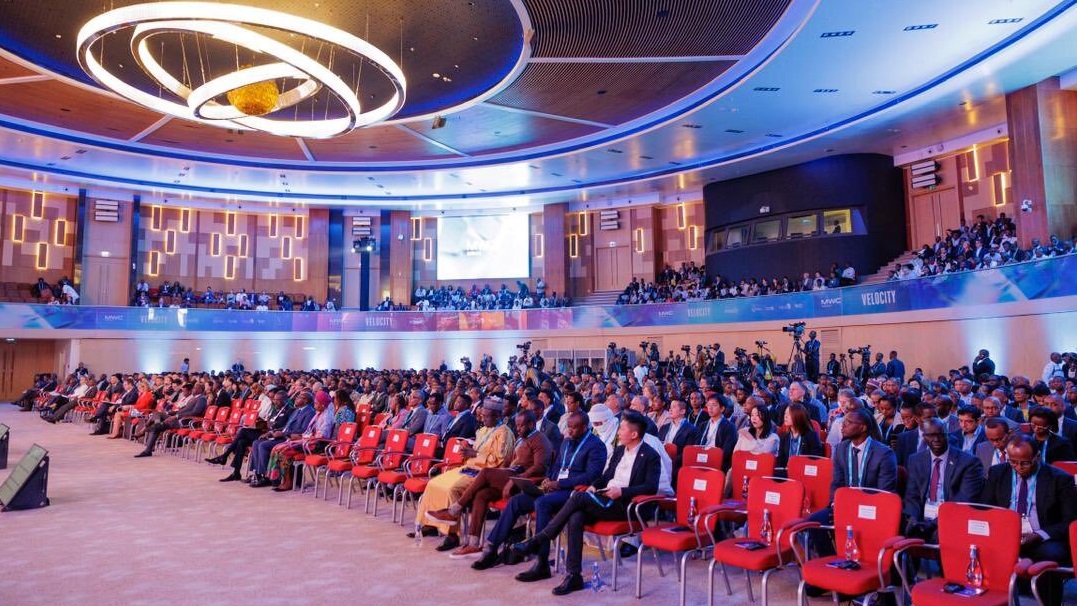At Mobile World Congress (MWC) Kigali, currently underway in the Rwandan capital, Huawei underlined how important 5G, and sub-3Ghz 5G in particular, is to unleashing Africa’s immense digital potential.

The congress, which is the African continent’s most influential connectivity event, brings together regulators, operators, and spectrum industry leaders from all over Africa. In opening the congress, Rwandan President HE Paul Kagame gave an overview of some of the continent’s biggest connectivity challenges and opportunities.
“Too many Africans remain offline,” the Rwandan president told the more than 2 500 delegates in attendance. “Today, Africa has the fastest-growing mobile penetration rate globally. But we still have a long way to go. Yet, we already have the means to address the problems we are dealing with today.
“The pandemic has added to accelerating the transition to a new era of technology-led development. Our young and talented entrepreneurs are driving this change, and we continue to support them,” he added. “That means we have to address the gaps in access and connectivity with a sense of urgency.”
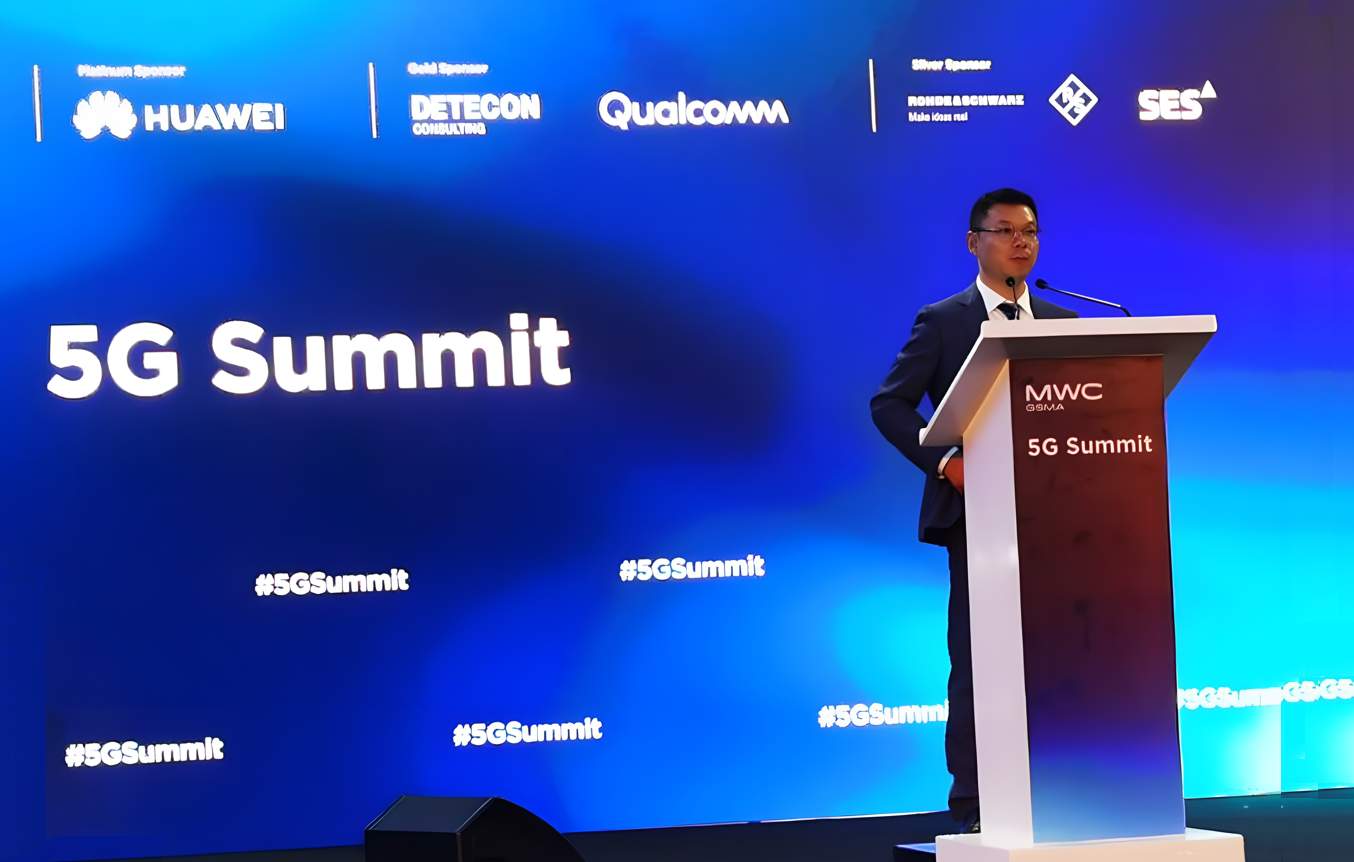
During the 5G Summit portion of the conference, Li Tao, President of Huawei Southern Africa Wireless Business, explained how sub-3Ghz 5G can help address some of those challenges.
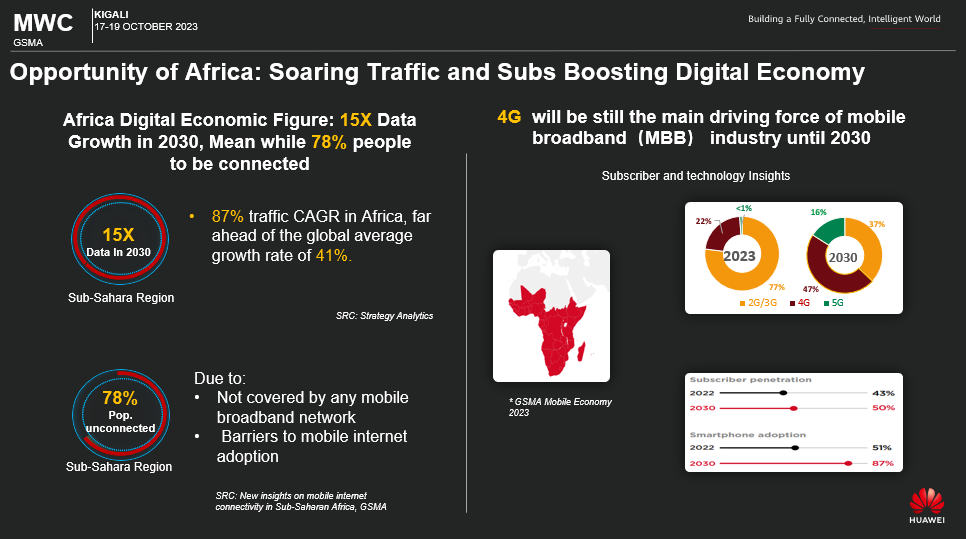
“We experienced strong growth in the demand to improve the last-mile broadband infrastructure to bridge the digital divide between urban and rural areas,” he said. “We believe that the full utilisation of the sub 3Ghz spectrum will be the best way to enable 5G and narrow the huge demand gap in 4G.”
To further enable Africa’s digital transformation, Tao called for more favourable industry spectrum policies to make use of the sub-3Ghz band.
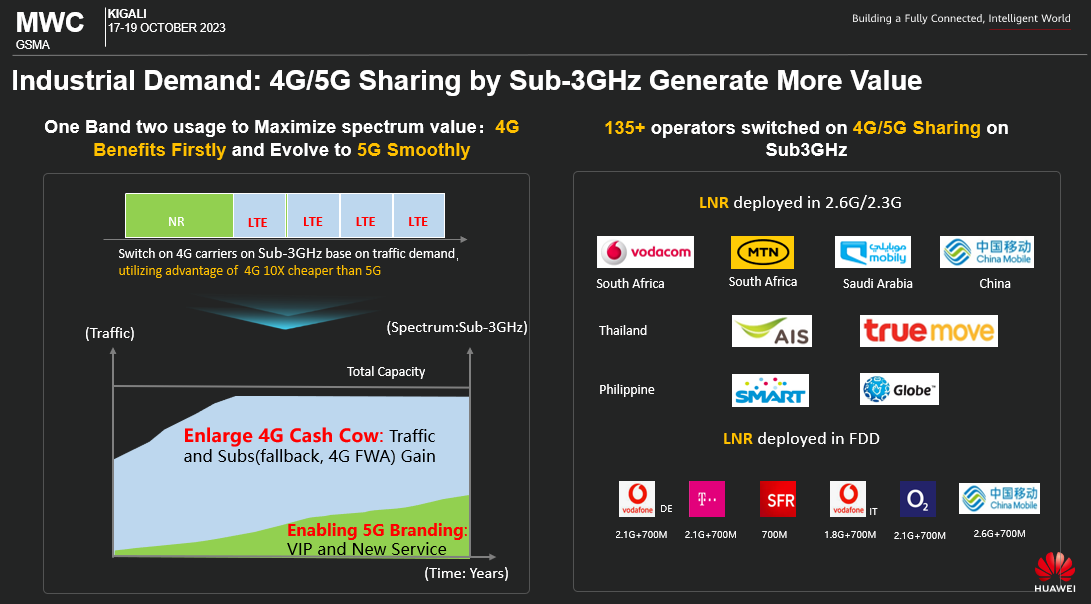
According to Tao, many industry players believe that sub-3GHz can generate the maximised spectrum value. That’s because it can enhance 4G capacity and stimulate traffic by one-band dual usage. It can additionally accelerate the evolution to 5G. Sub-3GHz will also continue to increase the earnings potential of legacy 4G networks while meeting the needs of 5G.
Toa added that 4G revenue growth will also support the continuous deployment of 5G in Africa. This is something that many of the world’s top operators, including the likes of China Mobile, MTN, and Vodacom, have seen first-hand through their adoption of 2.6/2.3Ghz dual-network deployment
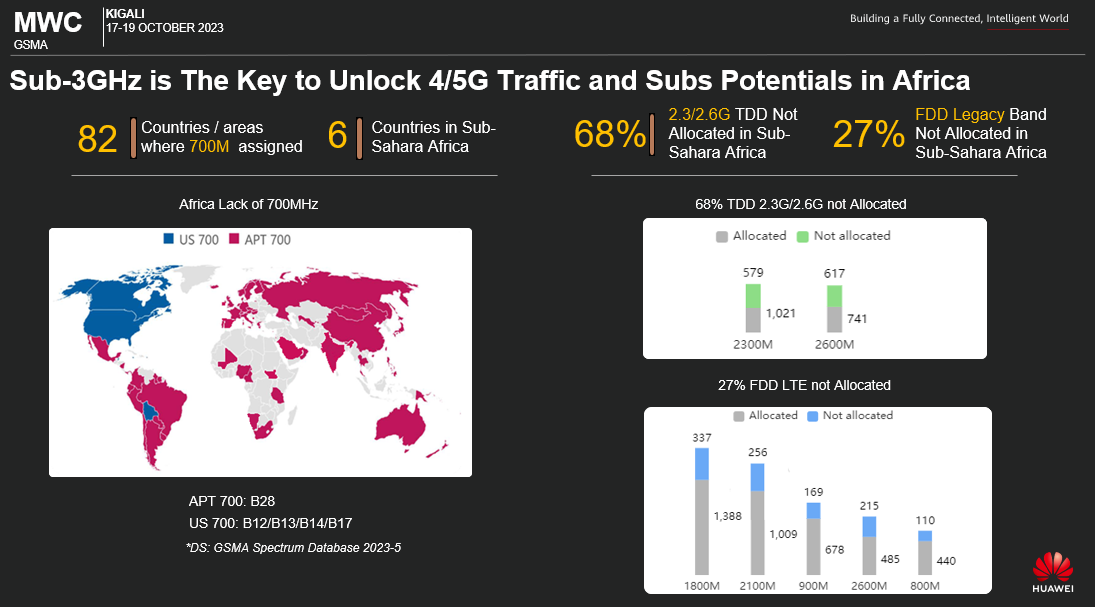
Which bands in sub-3Ghz are key to unlocking Africa’s potential?
The mobile industry believes that low-frequency 700Mhz and 2.3/2.6Ghz are the most critical to unlocking Africa’s digital potential. While 82 countries around the world have adopted the former, just six African countries have done so. At the same time, 68 percent of TDD 2.6/2.3Ghz spectrum on the African continent is still unallocated. These three bands also have a very good global ecosystem. In addition, some countries still have FDD spectrum that has not been fully distributed, and these have the ability to further stimulate 4G traffic.
Reviewing each band of sub-3Ghz, 700Mhz is one of the most important bands for coverage, it supports the low-band 4X4 MIMO technology, which enables deeper and wider coverage. Compared with the traditional 800Mhz, indoor and outdoor edge coverage has increased 100 percent and the capacity has increased 40 to 60 percent. Tests in Southern Africa show that the 4G availability ratio increased from 75 percent to 91 percent, and the edge rate increased by 163 percent. This illustrates that 700Mhz has great advantages as a 4/5G fundamental network.
Secondly, TDD 2.3/2.6Ghz has the most potential as a spectrum resource to improve the level of mobile broadband. It has good coverage, large bandwidth and smooth evolution capability. It is very suitable for MBB experience enhancement and home broadband: TDD 2.3/2.6Ghz has 5-~6dB better coverage than 3.5Ghz. It enables a 35 percent reduction in investment by the mobile operator, and, over time can release three to five times suppressed traffic in high-load scenarios through dual-use on one network. At the same time, the best ecosystem of 4G TDD ensures efficient use of spectrum.
As an example of how successful such an approach can be, Tao pointed to the successful case of South Africa using 4G fixed wireless access (FWA) to significantly improve home broadband coverage with 2.3/2.6Ghz FWA users.
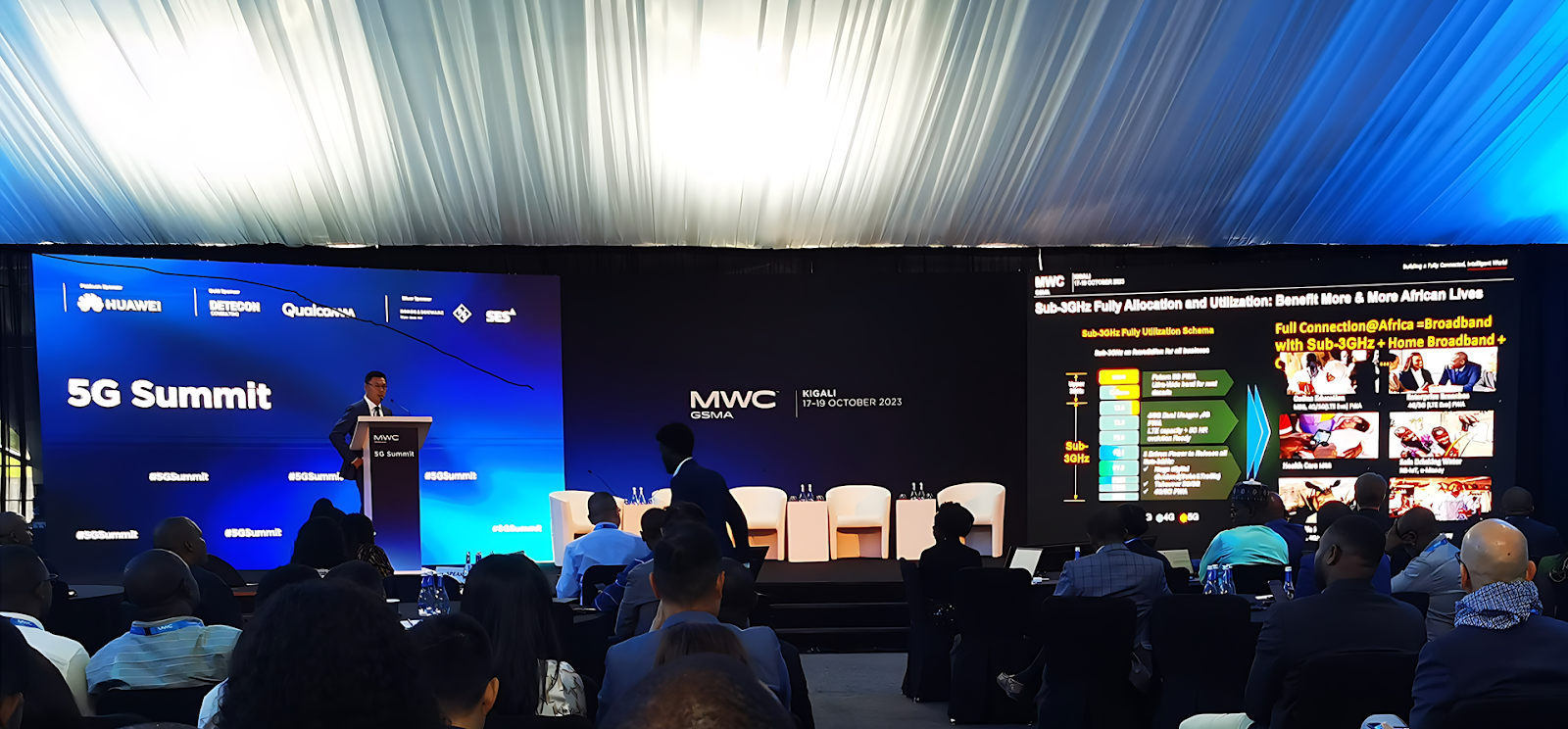
He added that mobile network operators in the region have other reasons for putting their weight behind the sub-3Ghz spectrum too. Among those reasons is the fact that it can consolidate fundamental networks such as mobile broadband, wireless home broadband, and IoT, to maximise social and economic value in a universal and efficient manner and pave the way for future 5G deployment. As 5G is deployed more widely, it will bring new applications for consumers, businesses, and government, to improve the lives of ordinary Africans and promote inclusive social and economic development.

Some highlight 5G spectrum strategies was expressed from experts and partners after the panel discussion:
- Full Allocation of FDD (Frequency Division Duplex) Sub-3Ghz (especially 700Mhz) for affordable and universal mobile broadband towards closing the digital gap and fuel Africa’s digital future,
- Full utilization of 2.3/2.6Ghz TDD Bands for further mobile broadband improvement,
- Overall development of 4G/5G FWA in order to uplift overall national broadband penetration rates,
- Tax incentives and rebates, affordability considerations both devices and services, digital literacy for rural and underserved areas.

